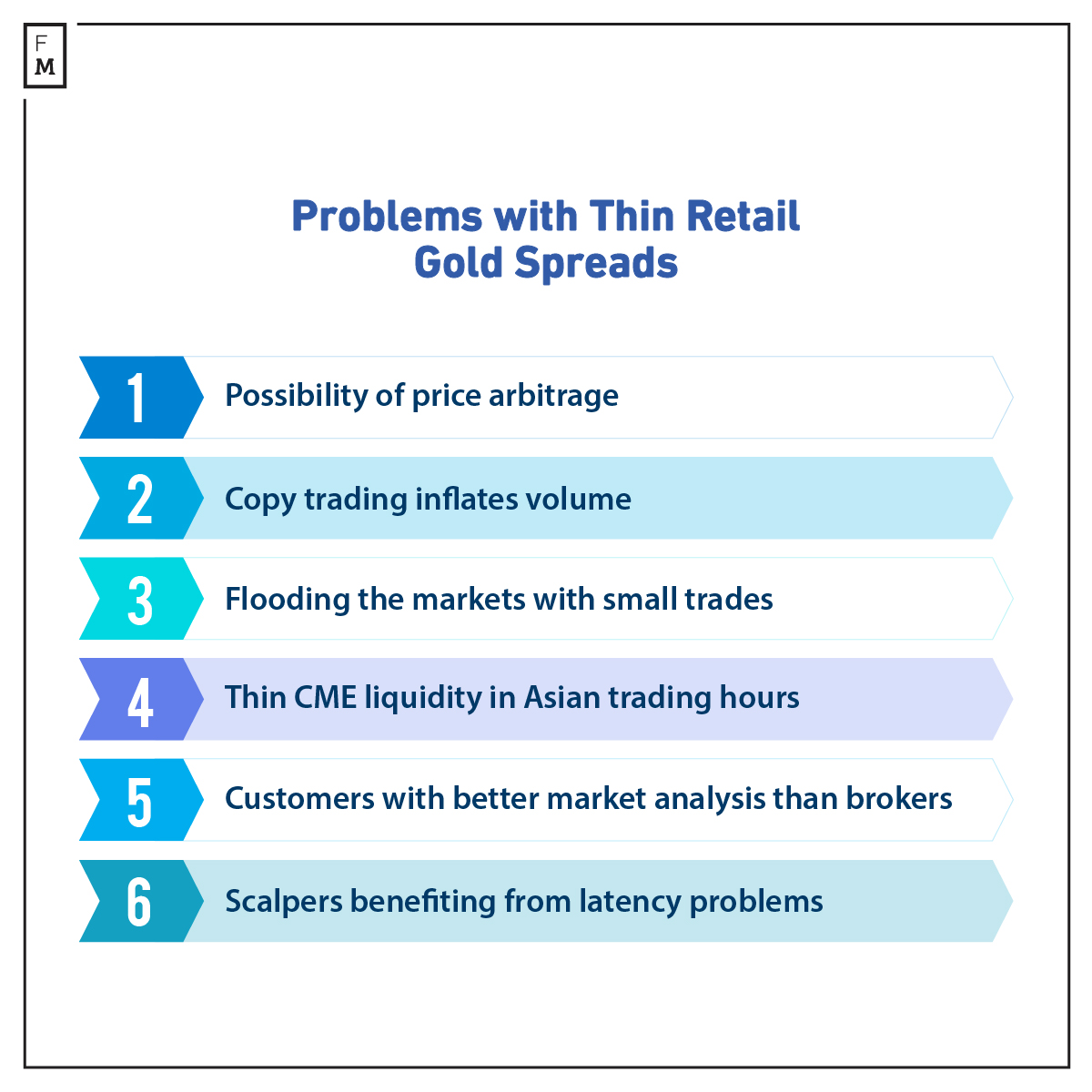Brokers take client pricing for granted. Marketing and sales teams push companies to be competitive, leading to the replication of the spreads that are then displayed to clients. As the majority of the market follows the B-Book model, the retail forex and contracts for differences (CFDs) industry rarely pays close attention to the prices it offers to clients compared to the actual market rates.
The Risk of Thin Spreads
When markets are volatile, and most clients lose, the spreads are not as relevant. In such scenarios, trading volumes are high, and brokers try to cut down on competition with thin spreads. These thin spreads create a race to the bottom with spreads and affiliate rebates, among other things.
However, when markets are more range-bound, the thin spreads can lead to disastrous consequences. These devastating consequences have been seen in the past 12 months. Gold is the most glaring example of this.

Is the Glitter of Gold Fading?
Gold spreads have come down too much in the past few years. Now, most brokers are handing out deep gold liquidity to their clients at a fraction of the cost they would incur if they had to properly hedge that amount of gold in the real market (CME Gold complex).
This phenomenon applies to larger clients trading thousands of ounces and occurs with large copy trader plays. It happens in addition to the fact that latency inherent in retail trading systems allows clients with access to CME prices to arbitrage most brokers relatively easily at the cost of less than $100/month for the data feed with market depth.
Typical problems with gold prices include:
- Customers with access to CME gold feeds can arbitrage brokers with slow servers or price handling. Latency arbitrage is usually caught when clients are increasingly excessive with it for a while, but many ordinary traders have stretches where they can also arbitrage.
- Copy traders following the simultaneous trades of a "successful trader" produce the aggregate buying and selling volume so large that it dwarfs the sizes offered in the underlying gold market.
- Customers who know some brokers already limit liquidity offered at any price point tend to be clever and machine gun the market with smaller trades. It enables clients to trade large amounts of gold on super tight spreads they could never get (at those sizes of retail lots) in the real world.
- Customers trading larger sizes during the Asian market time zones, where CME liquidity is the thinnest, bring all the mentioned problems that are most acute.
- Customers with access to CME feeds are able to get volume information. Often, these customers have better data analysis than most brokers. These customers can see if volumes are rising with the market or are more likely to be a false dawn as prices are rising on limited volume.
- Customers are definitely taking advantage of interest-free accounts.
- Most gold customers are in Asia and the Middle East, far from London and NY servers. This distribution of location exacerbates latency problems for brokers and clients alike. Together with tight spreads, it makes a heaven for scalpers.
Retail FX and CFDs technology has never had the protection mechanisms for such issues. However, as users become more sophisticated and market conditions change, retail forex and CFDs technology providers need to catch up with the defense mechanisms that exist for institutional market makers.
TraderTools' PriceOn™️ suite offers essential tools for accurate market pricing, including customizable institutional protections, ensuring competitiveness without losses to savvy gold traders. It features rate tolerance settings, reference rates, timing controls, liquidity management, and decision-making between slippage and rejections, all crucial for minimizing losses in stable gold markets.




















